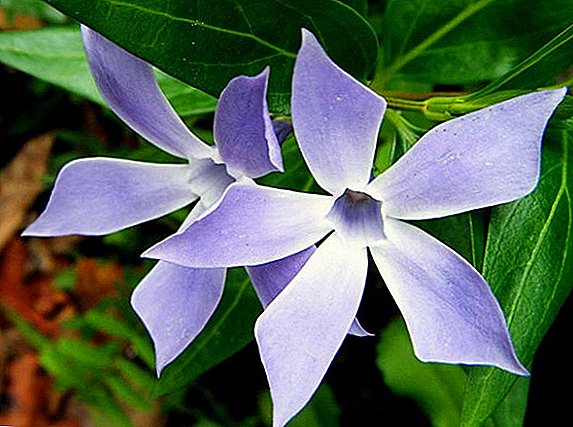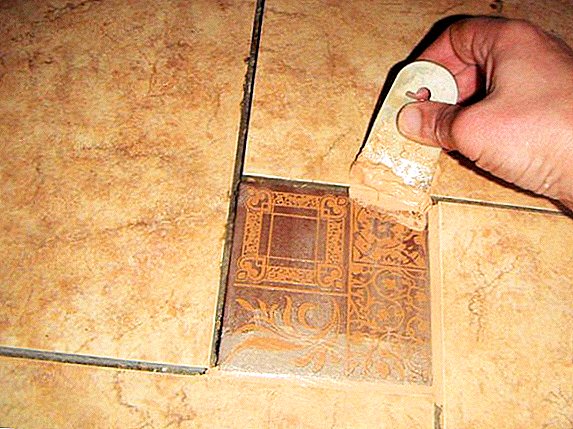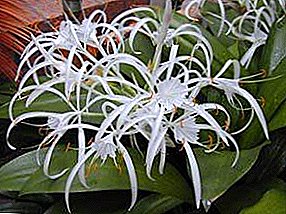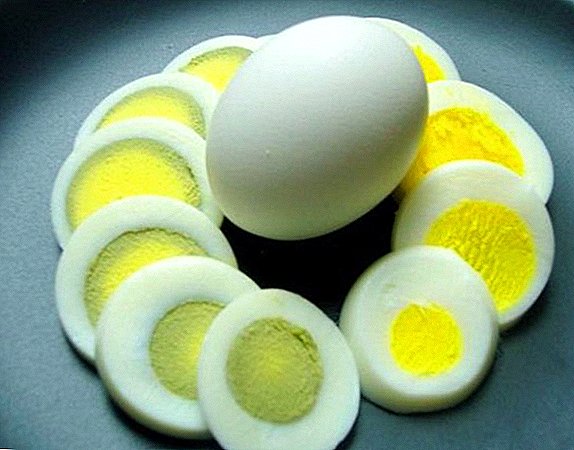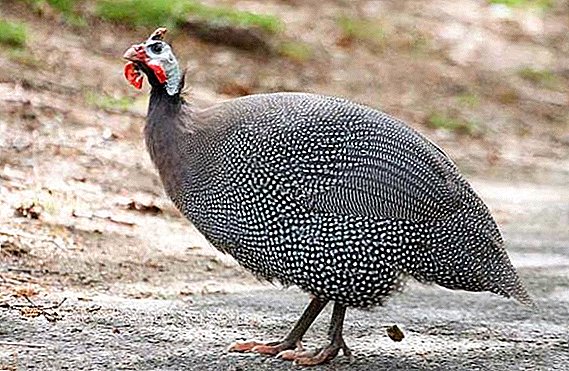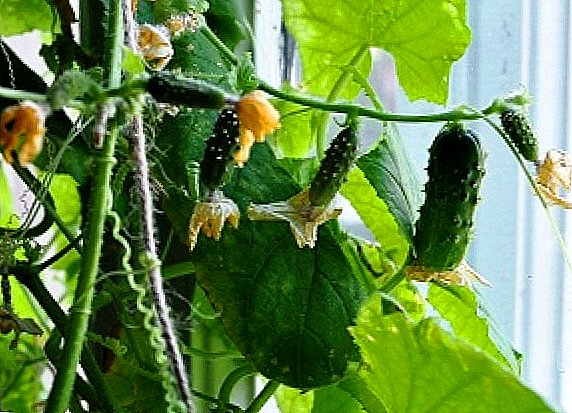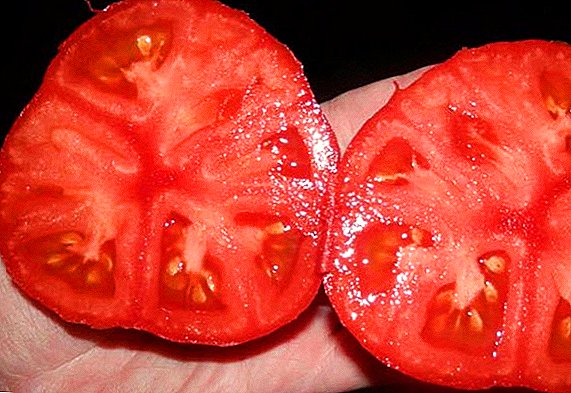 The decorative strawberry tomato variety is relatively new, there are already a lot of reviews about it, but there is little full information about the cultivation details.
The decorative strawberry tomato variety is relatively new, there are already a lot of reviews about it, but there is little full information about the cultivation details.
Therefore, in this article we cover in detail the main points of sowing, care, fertilizer and pest control.
Appearance and description of the variety
The variety of tomatoes "Strawberry tree" was bred by Russian scientists in 2013 and to this day has a great success in agriculture. Breeders have tried to make this variety the most prolific and resistant to different types of diseases and parasites. 
Fruit Characteristic
The tomato bush has a curling non-standard structure, growth is determined after the appearance of the first inflorescence. The fruits are heart-shaped and look very similar to large strawberries.
Check out such varieties of tomatoes as "Abakansky pink", "Pink Unikum", "Labrador", "Eagle heart", "Figs", "Eagle beak", "President", "Klusha", "Japanese truffle", " Diva "," Star of Siberia ".On average, a bush produces up to 6 brushes, on each tomato 7-8 pieces, with one fruit of the variety "Strawberry Tree" can weigh from 150 to 300 g.
Did you know? Although a tomato is considered a vegetable, from a scientific point of view it is a nightshade.Inside the tomato has about 12% of dry matter and 4-6 chambers, the taste of this variety is specific, since it is a hybrid of several other varieties, but very pleasant. Although it takes from 110 to 115 days to mature, it is considered early.

The advantages and disadvantages of the variety
The advantages include:
- high yield - up to 4-5 kg of tomatoes can be collected from one bush;
- genetic perfection - this variety was created using hybridization of other varieties, so it includes all their advantages;
- aesthetic appearance - these tomatoes were displayed as a decorative greenhouse variety, therefore long bushes with hanging clusters of fruits are intended not only for human consumption, but also for decorating a greenhouse or greenhouse;
- large fruits;
- resistance to temperature extremes;
- disease resistance (tobacco mosaic and verticillary wilt);
- can grow on barren land;
- fruits quickly survive when collected in a deficient form.

Deficiencies in the variety is still there, but they can vary depending on growing conditions:
- fruits are too large for salting whole;
- does not tolerate drought;
- requires a very scrupulous garter - “Strawberry tree” is quite difficult to grow in the open field, because this tomato is very tall.
Did you know? The fruit of the tomato contains serotonin and lycopene. Serotonin improves mood, and lycopene is a strong antioxidant that is not produced by the human body.
Agrotechnology
The agrotechnology of the landing of this variety is exactly the same as for any other.
You can not overfeed fertilizer soil, "Strawberry Tree" unpretentious to the ground and can grow and bear fruit even on sandy soil.
The best fertilizer for any variety of tomatoes will be wood ash and eggshell. 
Seed preparation, planting seeds and care for them
Tomatoes "Strawberry tree" are most often sold in the form of seeds from different manufacturers, so the first thing you need to check is the description and shelf life on the package.
Important! Determine whether expired seeds are still suitable for planting by dropping them in a saline solution (2 spoons of salt for 1 cup of water). Full weeds in a few minutes will settle to the bottom, and dried and hollow inside - float to the surface.Seeds are also worth being sanitized, since even a proven grain company may be infected with diseases or fungus.
Disinfection is done by soaking (about a day) in a solution of potassium permanganate (1%), treated with copper sulphate (100 mg per 1 liter of water) or a solution of boric acid (200 mg per 1 liter of water).  After disinfection, the seeds should be spread out on a damp cloth, make sure that they do not stick together and that the cloth never dries out. After 3-4 days, the seeds will sprout and need to be planted in separate containers for seedlings to a depth of 0.5-1 cm.
After disinfection, the seeds should be spread out on a damp cloth, make sure that they do not stick together and that the cloth never dries out. After 3-4 days, the seeds will sprout and need to be planted in separate containers for seedlings to a depth of 0.5-1 cm.
Picks should be done after the appearance of two or three leaves on the shoot, at this stage the plant begins to form a more complex root structure, and he needs a pot deeper.
Did you know? Tomatoes contain phytoncides that promote rapid healing, so the flesh is sometimes applied to burns and cuts.
Seedling and planting in the ground
Seedlings should be kept at a temperature of + 18 ... +25 ° C for the first 3-4 days after germination, after that you need to move the plant to a temperature of + 10 ... +15 ° C so that the sprouts do not stretch too quickly.
Sown seeds need 1-2 months so that they can be planted in open or greenhouse soil.  In greenhouse conditions, the soil should be loosened and drained, the tomatoes are planted in the greenhouse, as a rule, in early May. When transplanting into the open ground, the beds should be fertilized and mulched, and the ground should be heated, so you need to focus on the 15-20th of May.
In greenhouse conditions, the soil should be loosened and drained, the tomatoes are planted in the greenhouse, as a rule, in early May. When transplanting into the open ground, the beds should be fertilized and mulched, and the ground should be heated, so you need to focus on the 15-20th of May.
Learn about growing tomatoes in the greenhouse, in the open field, according to Maslov, hydroponically, according to the Terekhins.
Care and watering
Tomato "Strawberry tree" should be watered regularly, because it directly affects its yield. In the greenhouse, the soil is moistened every 3-5 days, in open beds depending on the weather, every day or every 3-5 days.
Important! If you overdo it with watering, the fruits may grow acidic and watery.It is necessary to graze every bush regularly, tear off each lateral sprout until it reaches 5 cm. This distributes nutrients and moisture to the main stem, and the future fruits will be large and saturated.

Pests and diseases
This variety can get sick with brown spot if you overdo it with watering or light. To cure plants of brown spot will help garlic solution and the correct barrier to light.
Tomatoes "Strawberry tree" in greenhouses also suffer from greenhouse whitefly and spider mites. From the tick it is necessary to wipe sick leaves and parts of the trunk with soapy water. The whitefly should be poisoned by sprinkling with special preparations.
Learn more about the diseases of tomatoes, especially leaf curling, blight, fusarium wilt, Alternaria.
Conditions for maximum fruiting
To stimulate the best yield, use top dressing from superphosphate fertilizer during flowering and fruiting (3 tablespoons per 10 liters of water).
Superphosphate should also be used if the leaves of the tomatoes turn blue or become rusty - this is a sign of phosphate starvation.  When planting seedlings in a greenhouse or in open soil, you can add 10-15 g of superphosphate to each well. This fertilizer nourishes the root system and improves the taste of the fruit; it is mineral and non-steroidal.
When planting seedlings in a greenhouse or in open soil, you can add 10-15 g of superphosphate to each well. This fertilizer nourishes the root system and improves the taste of the fruit; it is mineral and non-steroidal.
Tomatoes are very fond of potassium-nitrogen fertilizer, it is worth making the first time you move the seedlings into the soil and the second time immediately, as the first brush began to fasten.
A small list of potassium-nitrogen fertilizers, which are used both for foliar and for root feeding:
- Potassium monophosphate KH2PO4 - dissolve 1-2 g per liter in water.
- Potassium sulfate - a solution of not more than 0.1% (you should not overdo it with sulfates).
- Magnesium potassium sulphate - is used in the same way as regular potassium sulphate, but is applicable on more sandy soils, which usually have a lack of magnesium.
- Wood ash - is very rich in potassium and, moreover, home-made natural fertilizer. Ash should be diluted in proportions of 300-500 g per 10 liters.

Fruit use
Because the tomatoes are beautifully shaped - they are perfect for salting. Because of the low dry matter content, you can make tomato juice from these tomatoes, they are quite juicy and tasty for fresh salads. This variety can also be dried, dried and added to caviar.
The variety "Strawberry Tree" prevails by virtues: it is unpretentious, bears fruit well, it can be grown in different ways both in greenhouses and in the open field. And you can eat sour-sweet tomatoes similar to very large strawberries in absolutely any form.


